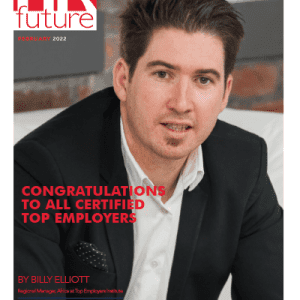Effective employee provisioning is crucial for ensuring new hires are well-equipped, integrated, and productive from day one. In today’s fast-paced business environment, Human Resources (HR) departments must streamline provisioning processes to enhance efficiency and improve the onboarding experience. This article explores HR best practices for streamlining employee provisioning, emphasizing the importance of planning, communication, and technology in creating a seamless onboarding experience.
Understanding Employee Provisioning
Employee provisioning refers to the process of preparing and equipping new hires with the necessary tools, resources, and information they need to perform their jobs effectively. This includes everything from setting up workstations and granting system access to providing training and orientation materials. Efficient provisioning helps new employees feel welcomed and supported, which can lead to higher job satisfaction and retention rates.
The Importance of Streamlined Provisioning
Streamlined provisioning is essential for several reasons. Firstly, it ensures new hires are productive as quickly as possible, reducing downtime and increasing overall efficiency. Secondly, a smooth provisioning process reflects positively on the company, enhancing its reputation as an organized and employee-focused organization. Lastly, it helps HR and IT departments manage resources more effectively, reducing the risk of errors and inconsistencies.
Planning Ahead
One of the most critical aspects of successful employee provisioning is thorough planning. HR departments should begin the provisioning process well before the new hire’s start date to ensure everything is ready when they arrive.
Pre-boarding Checklist
Creating a pre-boarding checklist can help HR teams stay organized and ensure no steps are overlooked. Here’s an example of what such a checklist might include:
- Welcome Package: Prepare a welcome package with essential information about the company, its culture, and key contacts.
- Workstation Setup: Coordinate with the IT department to set up the new hire’s computer, phone, and other necessary equipment.
- System Access: Arrange for the new hire to have access to relevant software, email accounts, and internal systems.
- Office Supplies: Ensure the new hire’s workspace is stocked with basic office supplies like pens, notebooks, and business cards.
- Orientation Schedule: Plan an orientation schedule that includes introductions to team members, training sessions, and company tours.
By planning ahead and using a comprehensive checklist, HR can ensure a smooth and efficient provisioning process that sets new employees up for success.
Celebrating New Hires
Welcoming New Employees
A small yet impactful way to enhance the onboarding experience is to celebrate new hires. This can include a welcome lunch, a personalized welcome note from the team, or a small welcome gift. Celebrating new employees not only makes them feel valued but also fosters a positive and inclusive company culture. These gestures can help new hires feel more connected to their colleagues and motivated to contribute to their new workplace.
Leveraging Technology
Technology plays a vital role in streamlining employee provisioning. Modern HR software solutions can automate many aspects of the onboarding process, reducing the administrative burden on HR staff and ensuring consistency.
HR Software Solutions
There are various HR software solutions available that can help streamline provisioning. These tools often include features like automated workflows, electronic forms, and task tracking. By implementing these solutions, HR departments can improve efficiency and accuracy.
For example, an HR management system can automatically generate tasks for IT to set up a new hire’s workstation and system access. This ensures that all necessary steps are completed on time and reduces the likelihood of errors. Additionally, electronic forms can streamline the collection of employee information, making it easier to update records and comply with regulatory requirements.
By harnessing technology to automate tedious tasks like data entry and document processing, HR teams can funnel resources toward projects that drive employee engagement and retention. Onboarding automation is the modern HR practice that kickstarts superior efficiency and exceptional employee experiences—goals every top-tier HR department strives to achieve.
Enhancing Communication
Effective communication is crucial for successful employee provisioning. HR departments should ensure clear and consistent communication with all parties involved in the provisioning process, including new hires, IT, and department managers.
Internal Coordination
Coordination between HR and IT is essential for setting up workstations, granting system access, and resolving technical issues. Regular meetings and status updates can help keep everyone on the same page and ensure that tasks are completed on schedule.
Clear Instructions for New Hires
Providing clear instructions to new hires is also important. This includes sending welcome emails with detailed information about their first day, including where to go, what to bring, and what to expect. Additionally, providing a point of contact for any questions or concerns can help new employees feel supported and confident as they transition into their new roles.
Training and Support
Effective training and support are key components of successful employee provisioning. Providing comprehensive training and ongoing support helps new hires quickly acclimate to their roles and become productive members of the team.
Orientation Programs
Orientation programs are an essential part of the onboarding process. These programs should include an overview of the company’s history, mission, values, and organizational structure. Additionally, providing information about company policies, procedures, and benefits can help new hires understand their responsibilities and the resources available to them.
Role-Specific Training
In addition to general orientation, new hires should receive role-specific training to equip them with the knowledge and skills needed for their positions. This might include hands-on training, shadowing experienced employees, and accessing online learning resources. Providing opportunities for new hires to ask questions and seek clarification can also enhance their learning experience.
Monitoring and Feedback
Monitoring the effectiveness of the provisioning process and gathering feedback from new hires can help HR departments identify areas for improvement and make necessary adjustments.
Employee Feedback
Encouraging new hires to provide feedback about their onboarding experience can offer valuable insights. This feedback can be collected through surveys, interviews, or informal check-ins. Understanding new hires’ perspectives can help HR identify any gaps or challenges in the provisioning process and make improvements for future hires.
Continuous Improvement
Continuous improvement is essential for maintaining an effective provisioning process. HR departments should regularly review their processes, identify areas for enhancement, and implement changes as needed. This might involve updating checklists, refining communication strategies, or investing in new technology solutions.
Conclusion
Streamlining employee provisioning is a critical task for HR departments, ensuring that new hires are well-equipped, integrated, and productive from day one. By planning ahead, leveraging technology, enhancing communication, providing comprehensive training and support, and continuously monitoring and improving the process, HR can create a seamless onboarding experience that benefits both new employees and the organization. Implementing these best practices will not only improve efficiency but also contribute to higher job satisfaction and retention rates, ultimately driving the success of the business.
Guest writer.













